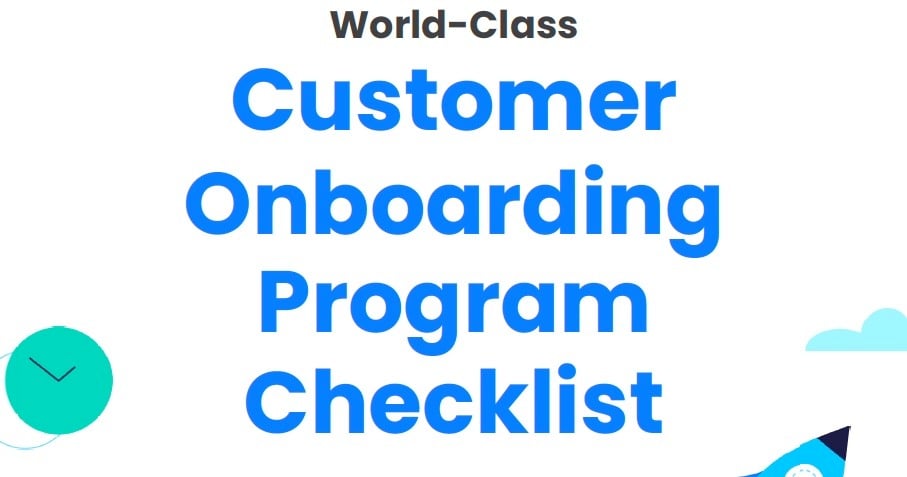How to Improve Your Onboarding with a Customer Onboarding Checklist
When it comes to customer onboarding, there's one thing I’ve learned after 15+ years in the SaaS industry: a well-structured onboarding process can make or break the customer relationship. First impressions are everything, and onboarding is your opportunity to make an impression that not only wows your customer but sets them up for long-term success with your product. If you're looking to improve your customer onboarding, a checklist is a simple yet effective tool that can guide your team and ensure consistency. Here's how to get started.
Why You Need a Customer Onboarding Checklist
Let's start with why a checklist is important. Onboarding involves multiple steps, teams, and touchpoints, and it’s easy to lose track or miss a key step. A checklist keeps things on track by:
- Ensuring a consistent experience for every customer
- Reducing the chances of missing important steps
- Making it easy to spot gaps and areas for improvement
- Helping align your internal teams, from sales to customer success
Pre-Onboarding: Start Before the Deal Closes
A great onboarding experience actually begins before your customer has signed the contract. Use the pre-sales phase to set expectations and align with all the key stakeholders. This is where your checklist can help you collaborate with your sales team, spot any potential implementation challenges early on, and make sure you’re all working from the same playbook.
Some key tasks for this phase might include:
- Collaborating with sales to understand customer goals
- Identifying key stakeholders and power users
- Pinpointing any potential risks or technical challenges
- Setting expectations for what onboarding will look like
Kick-Off: First Impressions Matter
Once the deal is signed, it’s time to kick things off. Your first official interaction as the onboarding team is crucial. This is your chance to show the customer that you’re not just delivering software, you’re delivering value. A well-planned kickoff meeting is essential. The checklist for this phase could include:
- Sending a personalised welcome email
- Scheduling the kickoff call
- Introducing the onboarding process and timeline
- Sharing key onboarding resources (like a guide or a customer portal)
- Confirming CRM details and handing off from sales
Implementation: Speed Up Time to Value
Implementation is often where onboarding slows down, but it doesn’t have to. A good checklist can help you keep the process moving forward without unnecessary delays. This phase is about getting the customer up and running as quickly and smoothly as possible while making sure you deliver value at every step.
Your checklist for implementation might look like this:
- Assess the customer's readiness for change (are all users aligned?)
- Develop a change management strategy with the customer
- Set up the customer account and assist with any data migration
- Provide technical support for integrations and customisation
- Deliver on any promised features or configurations
- Track progress and deliver regular updates to the customer
Training & Education: Ensure Long-Term Success
What’s the point of onboarding if your customer doesn’t know how to use your product effectively? Training is a crucial part of onboarding and should be tailored to the customer’s needs. Whether you’re offering live training sessions or self-service options like video tutorials, make sure you’ve got a clear plan for educating users.
Some tasks to include in your training checklist:
- Provide self-service resources (like a help centre, knowledge base, or Learning Management System)
- Schedule live training sessions based on user roles
- Set up in-app walkthroughs or tooltips to guide users
- Track user adoption and progress through the platform
Feedback Loop: Continuous Improvement
A world-class customer onboarding program doesn’t just stop when the customer starts using the product. You should be collecting feedback from day one. This feedback loop is essential for improving both the onboarding process and the product itself.
Make sure your checklist includes:
- Collecting feedback through surveys, support interactions, and regular check-ins
- Sharing feedback with internal teams to drive product improvements
- Closing the loop by responding to customers about the actions taken based on their feedback
Success Metrics: Measure What Matters
Lastly, you need to be tracking the success of your onboarding efforts. What metrics matter most to your business? What metrics matter most to your customer? Is it time to value, product adoption, customer satisfaction? Your onboarding checklist should include measurable success criteria, so you can see the impact of your improvements over time.
Here are a few success metrics to track:
- Time to Value (TTV): How quickly does the customer start realising value from your product?
- Product usage: Are customers using the key features they need to meet their goals?
- Customer Satisfaction (CSAT): How happy are customers with the onboarding experience?
- Retention rate: Are customers sticking around after the onboarding phase?
Final Thoughts: Building a World-Class Onboarding Program
Improving your customer onboarding doesn’t have to be a daunting task. By using a checklist, you can break down the process into manageable steps, ensure consistency, and continuously refine your approach. The key is to keep improving one section at a time, collaborate with your teams, and, most importantly, focus on delivering value to the customer from day one.
If you’re not already using a customer onboarding checklist, now’s the time to start. It could be the difference between a customer who feels overwhelmed and one who becomes a lifelong advocate for your product.


SUBMIT YOUR COMMENT